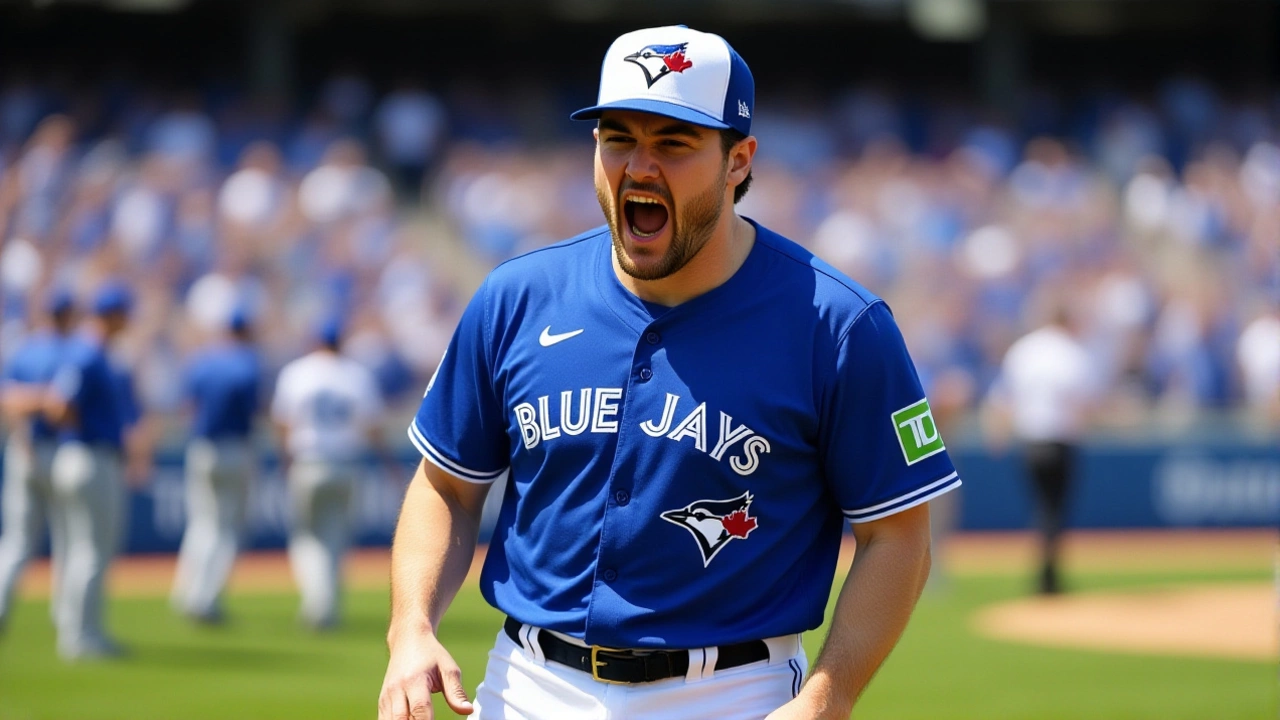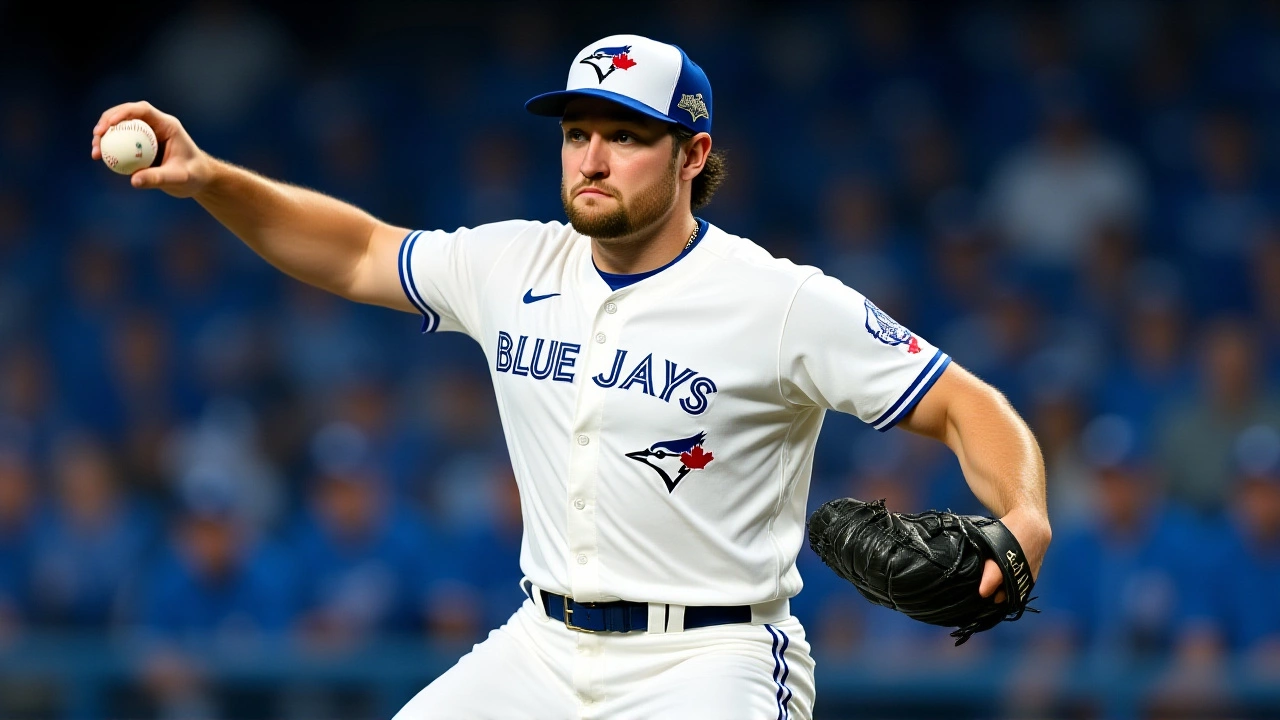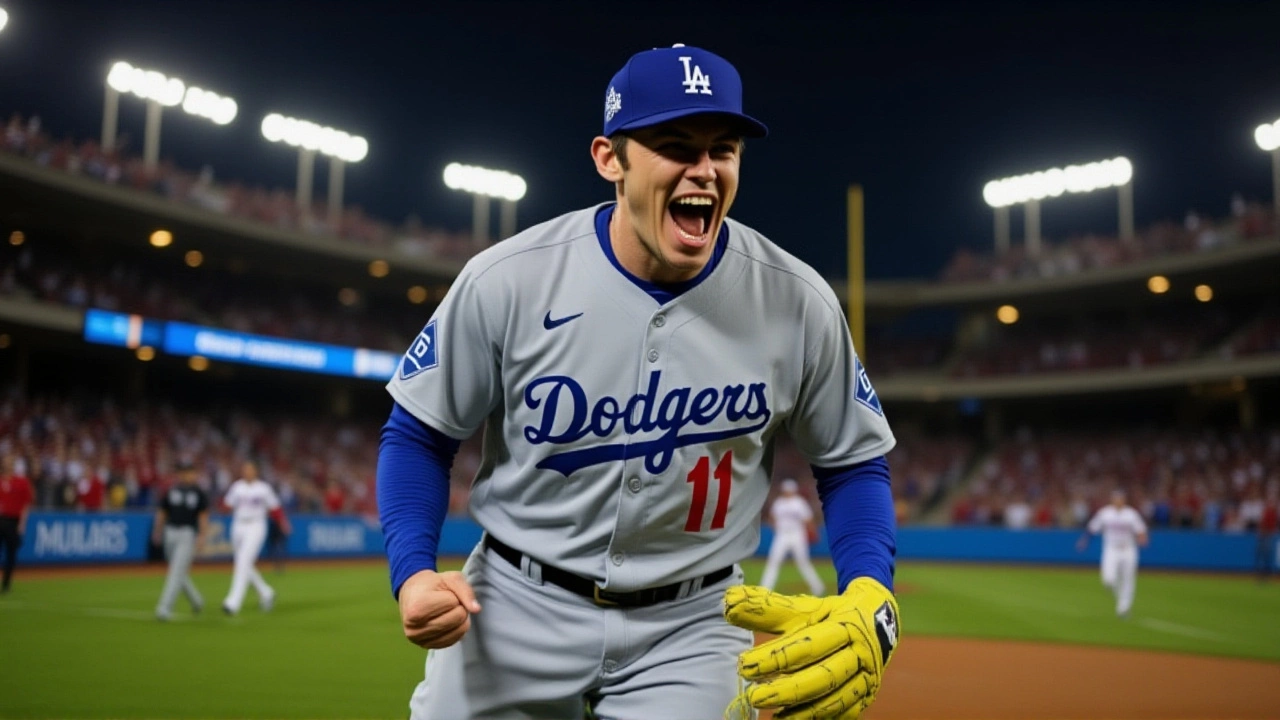When Trey Yesavage, a right‑handed pitcher for the Toronto Blue Jays was announced as the starter for Game 1 of the 2025 World SeriesDodger Stadium in Los Angeles, California, fans got a glimpse of history. The decision came from John Schneider, who told reporters at the Rogers Centre on October 24, 2025 that the 22‑year‑old rookie would face Los Angeles Dodgers ace Blake Snell on Friday night. At 22 years, 88 days, Yesavage becomes the second‑youngest Game 1 starter ever, according to MLB.com analyst Sarah Langs. The move has sparked a wave of debate across the baseball world, from veteran fans in Toronto to analysts in Los Angeles.
Background: Yesavage’s Meteoric Rise
Drafted 20th overall in the 2024 MLB Draft out of East Carolina University, East Carolina University saw Yesavage dominate college hitters with a blend of velocity and deceptive movement. He signed with the Blue Jays and made his professional debut on April 8, 2025, with the Class‑A Dunedin Blue Jays at TD Ballpark in Dunedin, Florida, in front of just 327 fans. By September 15, 2025, he earned a call‑up and tossed five innings against the Tampa Bay Rays at Rogers Centre, striking out nine and allowing just one earned run. That debut, highlighted by an 84 mph splitter that generated 11 whiffs on 14 swings, caught the eye of scouts and statisticians alike.
What’s odd enough is how quickly he climbed the ladder. Within six months, he moved from Single‑A ball to the bright lights of a World Series opener – a trajectory that even seasoned veterans describe as "unprecedented in modern baseball," according to Blue Jays general manager Ross Atkins in a post‑game interview on October 23, 2025.
Game 1 Decision: Why the Blue Jays Trust a Rookie
Schneider’s rationale was simple yet bold: "We need a pitcher who can handle high‑leverage situations, and Yesavage’s splitter and release point give us a distinct edge." The 6‑foot‑5 right‑hander releases the ball from a height of about seven feet, putting him in the same rarefied company as Justin Verlander and Pete Fairbanks. His splitter’s vertical approach angle of –9°, the steepest among MLB splitters with sufficient data, makes the pitch look like a needle dropping straight into the strike zone.
Statistically, Yesavage entered the series with a 4.20 ERA over three postseason starts, tallying 22 strikeouts against seven walks in 15 innings. Those numbers, while based on a limited sample, translate to a K/9 of 13.2 – well above the league average of 8.5. Moreover, his three regular‑season starts posted a 3.21 ERA, and he delivered five scoreless innings in the season’s final game, helping Toronto clinch the AL East title for the first time in a decade.
Backup veteran Kevin Gausman is expected to start Game 2, but Schneider felt the element of surprise and the left‑handed match‑up against Snell warranted the gamble. "We’re not just playing the odds; we’re playing the moment," Schneider said, smiling as reporters shouted questions.

Statistical Snapshot: How Yesavage Stacks Up
- Age at start: 22 years, 88 days (2nd youngest ever)
- Postseason ERA: 4.20 over 15 innings
- Strikeouts per nine: 13.2 (22 K in 15 IP)
- Splitter velocity: 84 mph with 6‑inch vertical break
- Release point: 7 feet (tied for 3rd highest in MLB)
When you compare those figures to Dodgers ace Blake Snell – who logged a 2.85 ERA in 2025 with a 9.3 K/9 rate – the matchup looks like a classic David‑versus‑Goliath story. Yet baseball loves a good upset, and the odds calculators have already shifted, giving Yesavage a 52 % win probability according to a proprietary model from MLB Pipeline.
Reactions from the Baseball Community
Twitter lit up instantly. Former Blue Jays star Devon Trout posted, "If a kid can start Game 1 at 22, maybe it’s time we stop treating experience as a monopoly." Meanwhile, Dodgers’ Hall of Famer Clayton Kershaw was more cautious: "You’ve got to respect the pressure. It’s a different beast when the whole world’s watching."
Sports analysts on ESPN’s Baseball Tonight debated the move for a full half‑hour. Analyst Mike Troutman argued that the Blue Jays are buying into a "high‑variance, high‑reward" strategy, whereas former MLB scout Jon Lashley warned, "A rookie with only three regular‑season starts could be a liability if the Dodgers attack early.

What This Means for the Series
Beyond the immediate game, Yesavage’s start could set a tone for the entire series. If he delivers a strong performance, Toronto may feel empowered to keep leaning on its youthful arms, possibly accelerating the development of other late‑season call‑ups. Conversely, a rough outing could force the Blue Jays to revert to veterans like Gausman sooner than planned.
One thing is clear: the decision highlights a broader trend in baseball where teams are willing to bet on advanced analytics and unique pitch profiles over traditional seniority. The Dodgers, who have relied on seasoned starters all season, now have to adjust their game plan on the fly, perhaps focusing more on bullpen depth.
As the crowd files into Dodger Stadium on October 25, the air will be thick with anticipation, not just for the iconic rivalry but for a narrative that could rewrite how teams think about postseason pitching. Whether Yesavage becomes a household name or a footnote will depend on the first three innings, but the story has already captured the imagination of fans from Toronto to Los Angeles.
Frequently Asked Questions
How does Trey Yesavage’s start affect the Blue Jays’ rotation?
By choosing Yesavage for Game 1, Toronto signals a willingness to stretch its young arm deeper into the series. If he performs well, the team may continue to back‑load its rotation with younger pitchers, potentially preserving veterans like Kevin Gausman for later, high‑leverage games.
What makes Yesavage’s splitter so effective?
His splitter sits at 84 mph but drops 6 inches vertically with a 10‑inch arm‑side movement, creating a steep vertical approach angle of –9°. That combination means hitters see a pitch that looks like a fastball before it dives, generating an 11‑out‑of‑14 whiff rate in his debut – far above the league average.
Why did the Dodgers choose Blake Snell for Game 1?
Snell posted a 2.85 ERA during the regular season and has a proven track record in postseason pressure. His right‑handed arsenal and experience against high‑caliber lineups make him a logical counter‑punch to a rookie starter.
Could Yesavage’s rapid rise become a model for future prospects?
If he succeeds, teams may scout for pitchers with unique release points and splitters earlier, trusting analytics over traditional win‑loss records. However, his case is still rare; most prospects need more seasoning before a World Series start.
What’s the historical significance of a rookie starting a World Series opener?
Only three pitchers in MLB history have started a World Series Game 1 with fewer than five regular‑season starts. Yesavage becomes the second‑youngest ever, joining the likes of 21‑year‑old lefty Claude Rainey from 1977, underscoring how unusual this moment truly is.
